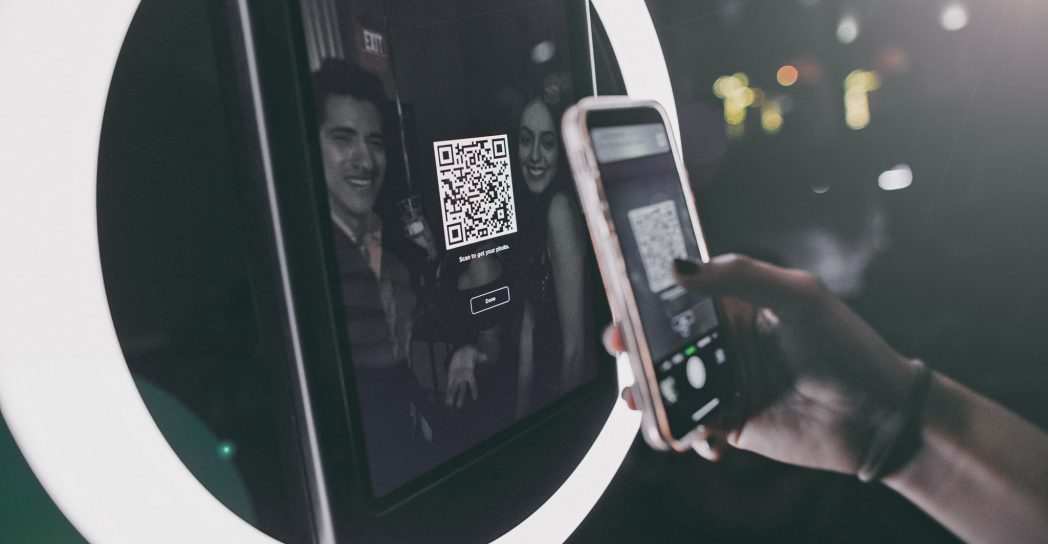QR codes may have taken their time to catch on in the U.S., but they’ve officially gone mainstream. By 2025, it’s second nature to scan a QR code—whether it’s during a TV commercial, to view a menu at a restaurant, pay for parking, or log in to an account using two-factor authentication.
Most people instinctively open their phone’s camera, point it at a QR code, and instantly get the info they need. Which is great news for live events, because QR codes are a quick and seamless bridge between in-person experiences and digital content.
At Simple Booth, we’ve made it even easier for participants to get their photos with our fast, contactless QR code sharing—plus AirDrop for Apple users. It’s the perfect way to keep things moving and encourage guests to quickly share their favorite shots with friends and family on social media.
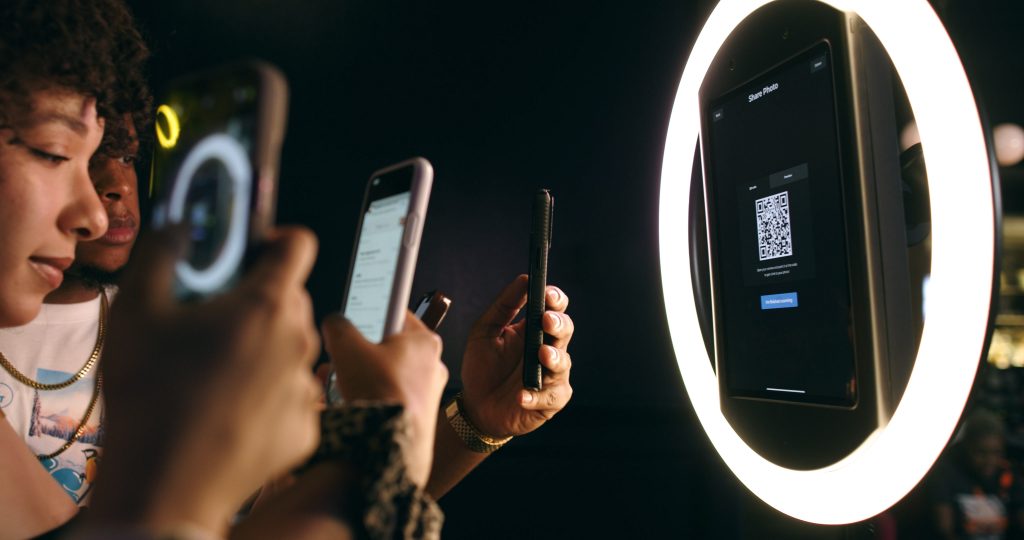
How QR code sharing works in Simple booth apps
When participants are ready to grab their photo or video, all they have to do is open their phone’s camera app and scan the unique QR code displayed on the Simple Booth HALO® app screen. It’s quick, intuitive, and eliminates the need to enter a phone number or email—perfect for keeping lines moving, especially with groups.
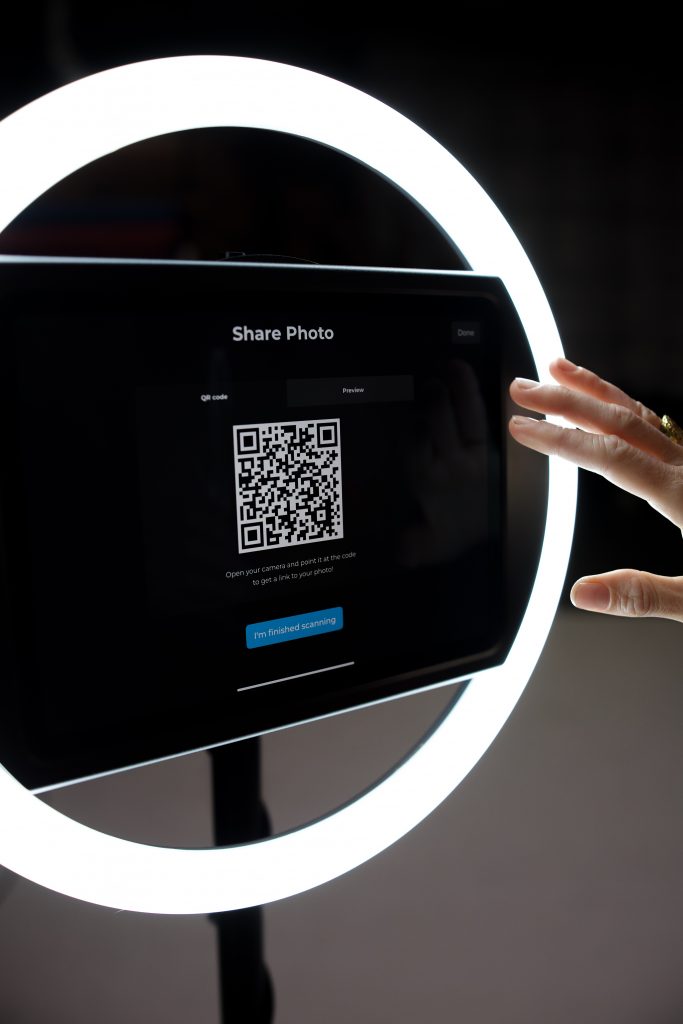
For iPhone users, AirDrop is also available as a tap-and-go option right from the booth screen—another fast, contactless way to deliver photos instantly. It works even when the booth is offline and, like QR sharing, requires no personal information from guests.
What happens when a participant scans the QR code?
Once a guest scans the code, their phone’s camera prompts them to open the link in their mobile browser. From there, they can instantly view their photo, download it, share it on social, or, if the gallery is public, explore other branded images in the event gallery.
It’s a smooth, self-serve experience that keeps the energy up and the process effortless.
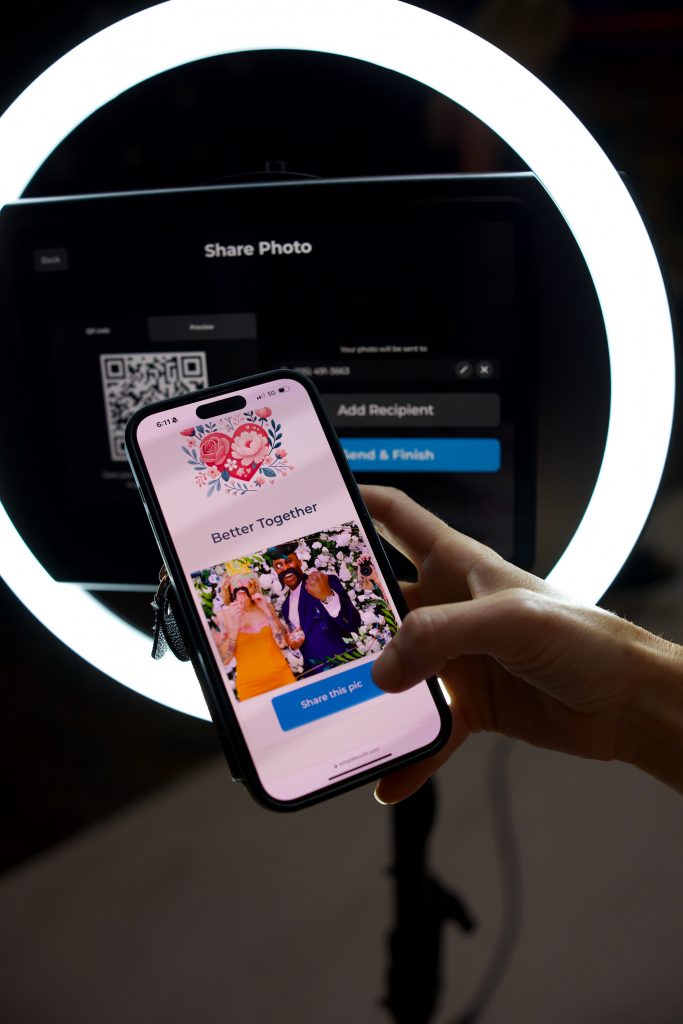
Simple Booth’s QR sharing is also unique compared to solutions that work in reverse—where the booth scans a participant’s code. Those setups typically rely on API integrations to pull attendee data and are often used for larger, customized activations. (In fact, we’ve implemented this for a Super Bowl event!)
Need something like that? We’re happy to chat about a tailored solution for your event.
Let’s Talk
Our photo booth experts are ready to help.
Privacy considerations
Unlike text or email delivery, both QR code and AirDrop sharing let participants receive their photos without sharing any personal contact information. That means no phone numbers, no email addresses—just a fast, secure, and private way to access content. It’s an ideal solution for organizations aiming to reduce the collection of personally identifiable information (PII), whether for internal policies or to align with privacy regulations like GDPR or CCPA.
Of course, if your goal is to collect contact information, these sharing methods don’t get in the way. With Simple Booth’s built-in data capture feature, you can prompt guests to complete an optional form before accessing their photo. This way, you get the best of both worlds: collect leads when it matters, and still offer a fast, frictionless way to deliver photos via QR code or AirDrop.
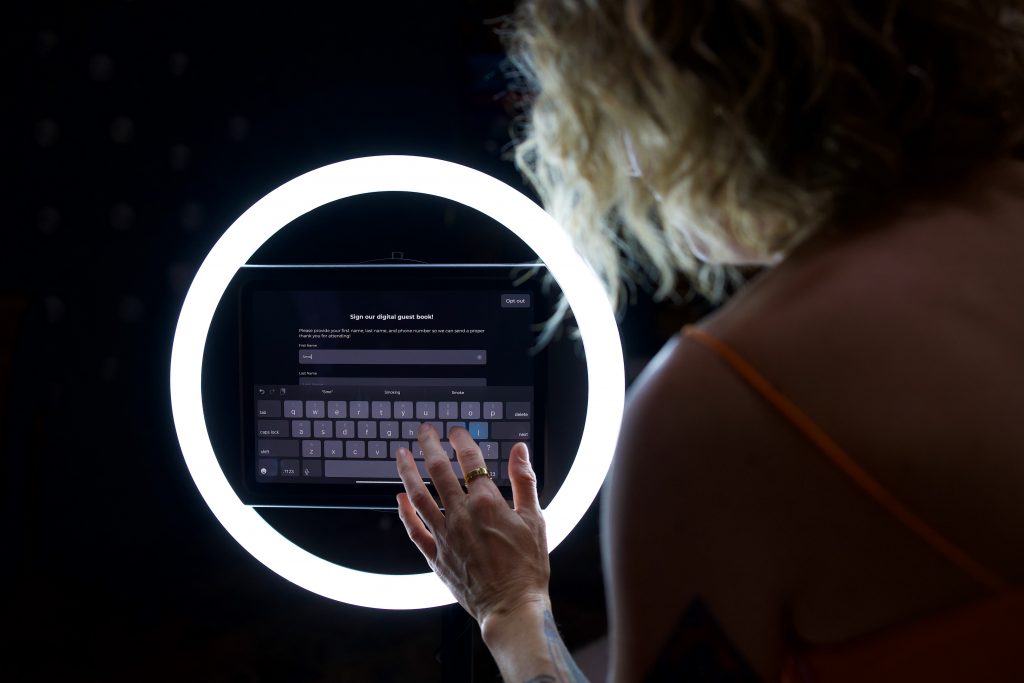
Sharing options by network speed
QR code sharing works best when your kiosk has a strong and reliable internet connection. That way, the photo can upload and become available at the linked URL before the participant scans the code. If the connection is slow or temporarily unavailable, the Simple Booth app will automatically let participants know that their photo will be ready soon—helping set the right expectations.
Text and email delivery offer more flexibility in low-connectivity environments. These messages can queue in the background and send once the connection improves, notifying participants when their image is ready to view.
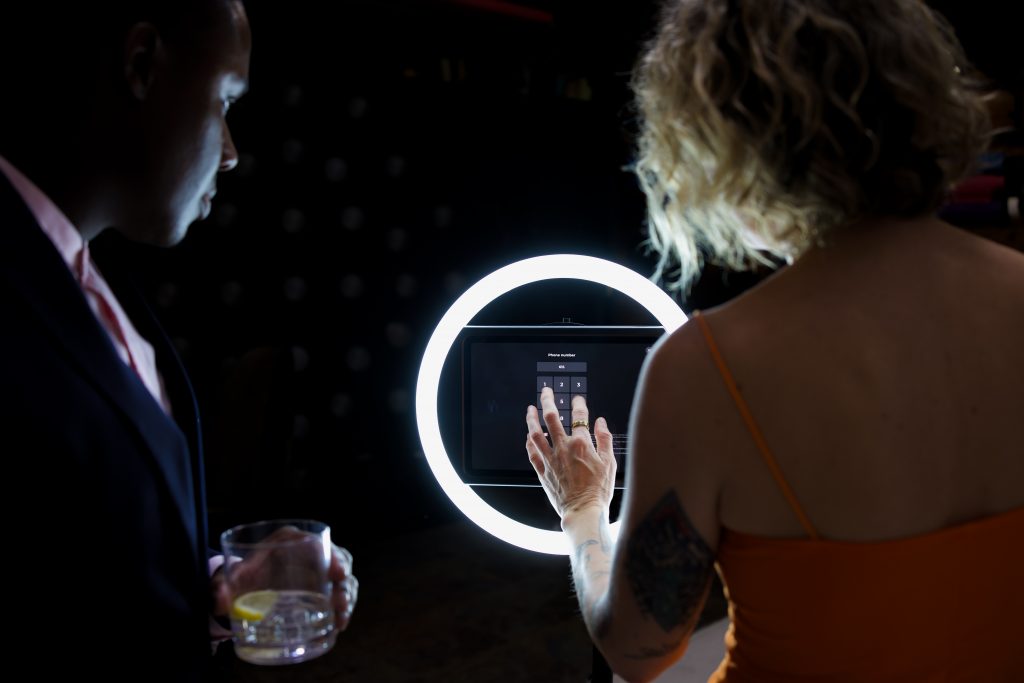
For iPhone users, AirDrop sharing provides a standout advantage: it works instantly, even when the booth is completely offline. No internet connection needed, no contact info required—just a tap-and-go delivery directly to the user’s device.
Each method has its strengths, so we recommend enabling multiple sharing options to adapt to different network conditions and guest preferences.
Use cases for QR codes and AirDrop
QR codes are a smart, streamlined way to deliver photos at any event—and they shine in scenarios where speed, accessibility, and privacy matter most.
At events with celebrities, government officials, or other VIPs, both QR codes and AirDrop offer a secure, contactless way to receive photos without entering any personal information. That means a fast, private experience for every guest.
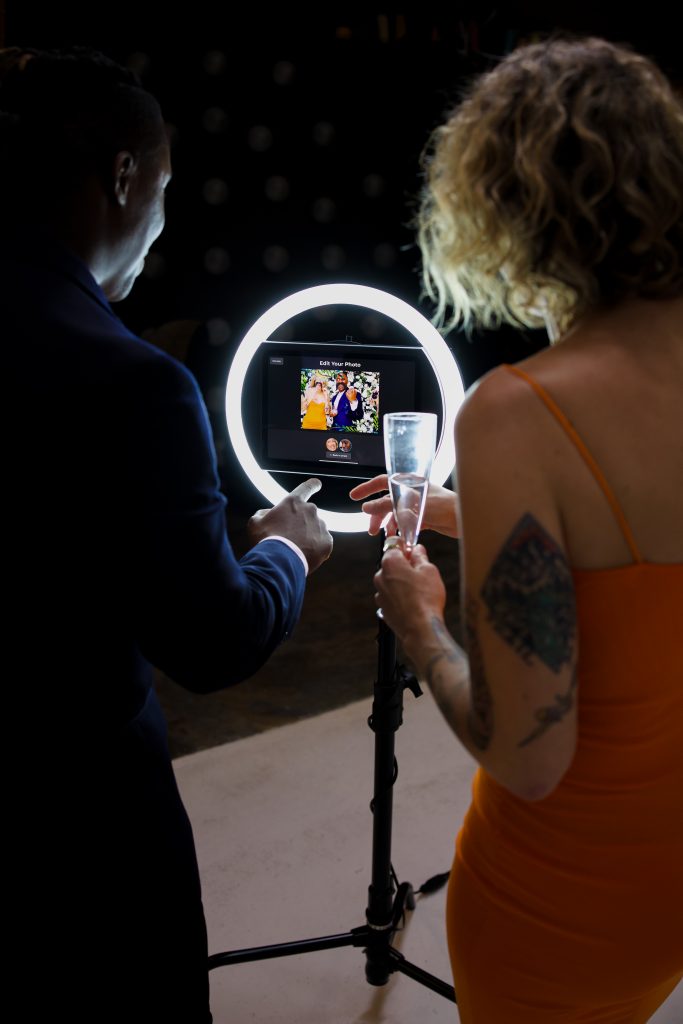
In environments with limited or unreliable internet—like remote venues, outdoor festivals, or crowded stadiums—AirDrop becomes especially valuable. It works offline and delivers images instantly to iPhone users, no Wi-Fi or data needed.
QR code sharing, on the other hand, is universally familiar and works seamlessly across both Apple and Android devices, making it a great option for high-traffic events with diverse audiences.
Both QR code and AirDrop sharing are available across all Simple Booth plans and work in both the HALO and Classic apps, giving you maximum flexibility to deliver a seamless, intuitive guest experience—no matter the setting.
Simple Booth is a platform for social photography that businesses use to engage customers, get new leads and create social impressions online.
